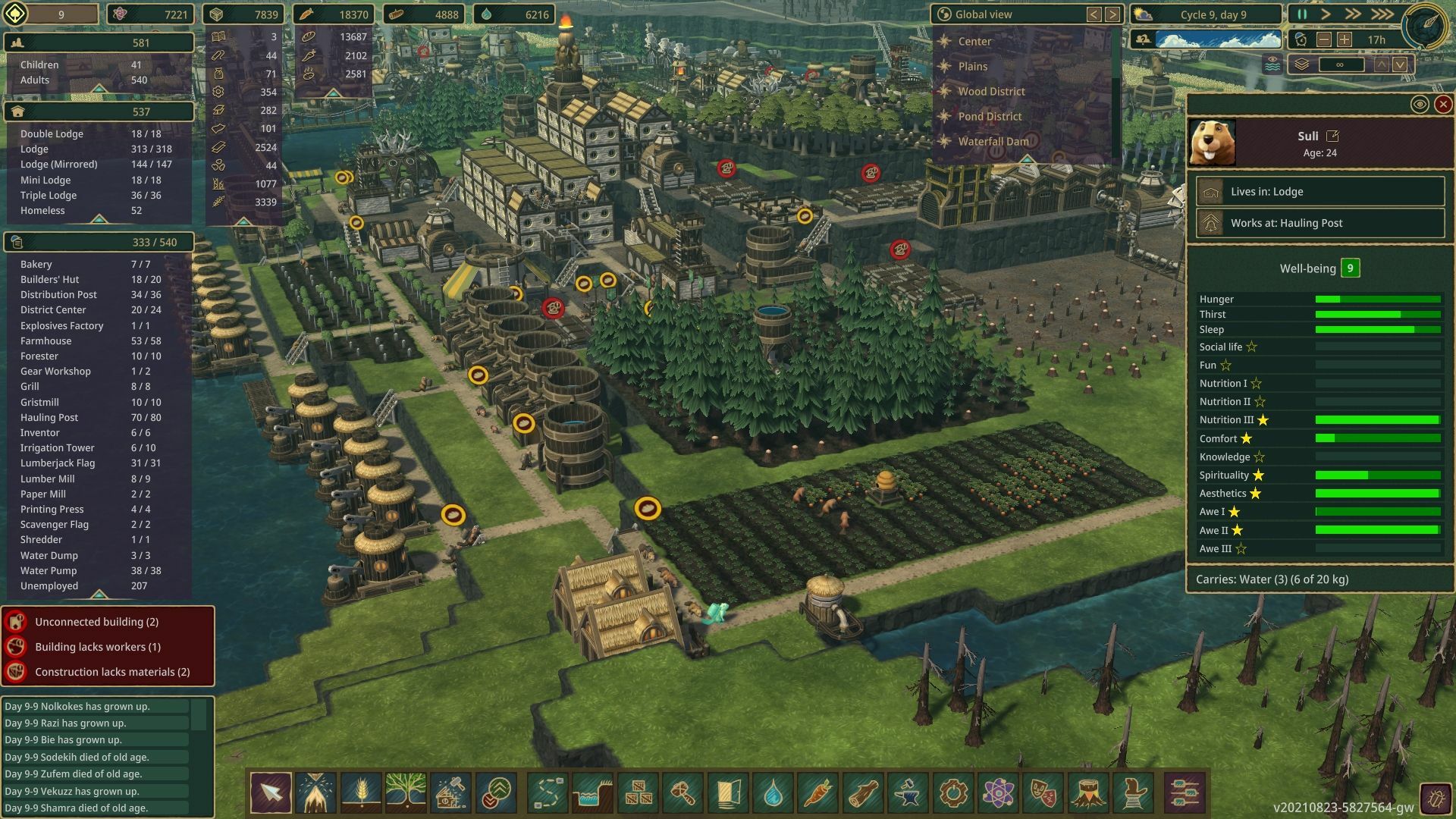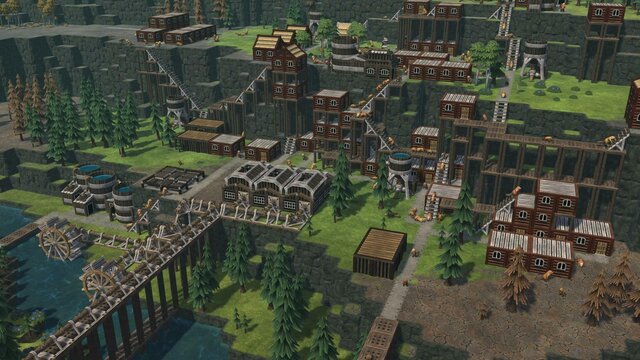

Localized 'village' housing can make the pipeline more efficient. This requires 10 workers (4 farmers, 2 millers, 1 baker, and 2-3 porters, not including labor required for lumber, power, and water supply.) The porters add a technically optional hidden requirement of a localized hauling post. I'm posting it here first, in case you see some major flaw in how I am using your data.ģ36 Wheats : 32 Crop Yield : 4 Wheat Farmers: 2 Farmhouses : 2 Gristmills : 1 Bakery : 32 Bread : 480 Calories : 200 Beavers Fed I'm using this data to make a mini guide for a wheat production guideline. So it's just a correction to bring a more reliable result than a raw one. In addition, usually the houses are very far from the farm, in my case it was right next door. This is more practical than the maximum number, which is hard to get to and the difference for the whole farm is only one beaver anyway, it doesn't really matter for the game. So I subtracted ~5% from the value of each food for a more realistic maximum value per farm. I deliberately underestimated the values as my farm was perfectly placed and all the tile were as close as possible and the productivity was total 100%, which is usually unrealistic. If you get 24 food, then each farmer would only need 32 tiles. Especially as you usually have a couple of extra lumber mill's, so all the better to round up than down.īut I added the exact proportion in the table because it was the only case.

It's not a factorio that you do 50 or 100 gear workshops. The numbers 12 and 2.5 are visible, on the right is only my proposal as it is optimal. The difference would only matter on huge quantities that are never needed. There is a far greater chance that you will achieve worse productivity on a 5 gear workshop than on a 1 lumber mill. 1 Lumber mill can provide multiple gear shops > ~5 Gear shops per 1 Lumber Mill.Īnd IMO you are "rounding" pretty generously. For carrots, for example, you no longer need 32 tiles, but 32 * 0.67 = 21.44 (~22). With a beehive, on average, plants grow at a rate of 150%, which means that the number of tiles per farmer decreases to 67%. I have a feeling it's a bug, but the engine even after pausing continues to consume wood without generating power. You need approximately 1 maple lumberjack from a 65% table to power 2 engines. The engine uses 24 woods per day, 1 per hour. Wheat: 240/168 = 1.42 food per day / tile (-some space for Mill, Bakery, Warehouse and Watermill. Potato: 64/101 = 0.63 food per day / tile (-some space for additional Warehouse and a Grill)Ĭarrots: 48/68 = 0.71 food per day / tile Ratio of food gained to area without bonuses: * Minimum number of tiles required for continuous work of a single farmer. (100% working speed, 35% movement speed, 20% carrying speed, 30% strength) JobĮnough for 2 farmers (32 wheat) (1 Bakery : 2 Mill's : 1,6 Farmers)ģ7 Blueberries / 23 Birches / 20 Pines / 14 Maplesĥ4 Blueberries / 39 Birches/ 31 Pines / 22 MaplesĦ5 Blueberries / 49 Birches / 38 Pines / 27 Maplesġ Forester per 2 Birch / 2 Pine / 3 Maple Lumberjack's (65% working speed, 5% movement speed, 20% carrying speed, 30% strength)ģ - lategame set: bonuses from 2 set + fun, knowledge, awe 2 (100%)

All nutritions, comfort, spirituality, aesthetics, awe 1 (65%) I tested 3 sets of bonuses with a 16-hour working day:Ģ - midgame set. The beaver also consumes 1 book every 4 days on each difficulty level. The daily requirement for 1 beaver is 2.4 food and 2 water (Normal and (Hard) or 1,44 food and 1,2 water (Easy). A bit of information about what income you can expect with zero bonus (it is easy to calculate the amount with bonus based on this data).


 0 kommentar(er)
0 kommentar(er)
